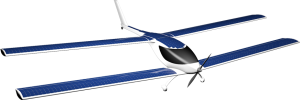
French Eraole is planning to fly a ‘zero-emission’ plane in a transatlantic trip powered by algae and solar energy. History of transatlantic flights is studded with the legendary achievements of pioneers like Lindbergh, Mermoz, Rutan. Until now, all these pioneering flights have used fossil fuel, a depletable resource deemed accountable for a variety of proven adverse impacts and nuisances. The first ever non-stop zero-carbon footprint transatlantic flight by Eraole is scheduled for June 2016: this “pioneer” performance , holds the prospect of major environmental benefits for the future of aviation and the green mobility of tomorrow.
Through his applied research work, the founder and pilot Raphaël Dinelli brought together his personal interest in navigation, composite materials and renewable energy. And through his work, he has proven that ever increasing energy requirements of many sectors are compatible with environmental – friendly approaches. In the aviation sector, his Eraole project tackles a major challenge for the future of green flight.
This post by Charley Cameron on Vi[e]able.com, describes well the innovation and the high-level technologies that will be used in this pioneerestic project. The Eraole has been designed and built by the Ocean Vital Foundation, an organization founded by Dinelli in 2007 to conduct research in solar and wind technologies. One of Ocean Vital Foundation’s patents is a process to “embed extra high-efficiency photovoltaic cells into thin, lightweight, flexible composite materials.” And it’s this technology that is key to the Eraole. With 43 square meters of photovoltaic cells encapsulated within wings made from this composite material, the Eraole’s wings comprise a high performance thin-layer that reduces fuel needs and enhances the mechanical strength of the plane.These photovoltaic cells will provide about 25 percent of the power needed for Dinelli’s 50-hour New York to Paris flight, while biofuel generated from microalgae will provide an additional 55 percent of the plane’s power needs. With the craft’s lightweight, flexible design – its maximum take off weight is just 750 kg- Dinelli expects to spend about 20 percent of the transatlantic crossing gliding. Lithium-ion polymer batteries will provide additional power during take off.
The flight will not be without physical stress for Dinelli. With a cruising speed of 140 km/h, the 50-hour flight will take place at around 10,000 feet in a completely unpressurized cabin with no autopilot– meaning the Dinelli will spend the entire flight in a cramped cabin, breathing around 30 percent less oxygen than we’re used to here on the ground.


